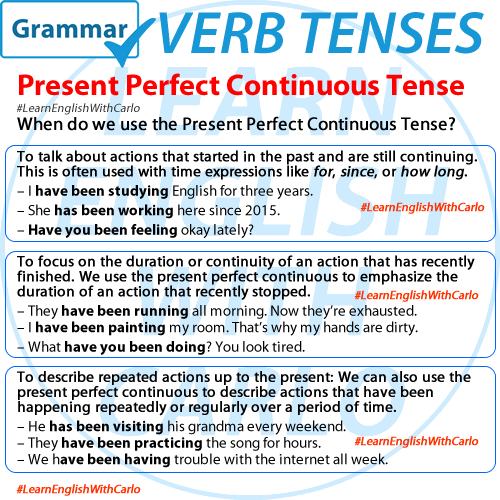
The Present Perfect and Present Perfect Continuous tenses can sometimes be used interchangeably, but they often emphasize different aspects of an action. Here’s a breakdown of when they are the same and when they are different:
When the Present Perfect and Present Perfect Continuous Are the Same:
Both tenses can be used to talk about actions that started in the past and continue into the present. In these cases, they emphasize the duration of an action or its result, and the difference in meaning is minimal.
- Examples:
- Present Perfect: I have lived here for 10 years.
- Present Perfect Continuous: I have been living here for 10 years.
In both examples, the speaker has lived in the same place for 10 years, and the action is ongoing. The meaning is nearly the same, although the continuous form emphasizes the duration more strongly.
When the Present Perfect and Present Perfect Continuous Are Different:
- Focus on Result vs. Duration:
- Present Perfect emphasizes the result of the action.
- Example: I have written three emails today. (Focus is on the completed action—three emails are done.)
- Present Perfect Continuous emphasizes the duration or ongoing nature of the action.
- Example: I have been writing emails all morning. (Focus is on the activity itself, not necessarily completion.)
- Present Perfect emphasizes the result of the action.
- Completed vs. Ongoing Actions:
- Present Perfect is used for actions that are completed or when the number of actions matters.
- Example: He has visited Japan three times. (Focus on how many times, the visits are complete.)
- Present Perfect Continuous is used for ongoing actions or ones that have recently finished and have visible results.
- Example: He has been visiting Japan for work. (The visits are ongoing or frequent but not finished.)
- Present Perfect is used for actions that are completed or when the number of actions matters.
- State Verbs:
- With state verbs (e.g., know, like, believe), only the Present Perfect is used because these verbs don’t typically take continuous forms.
- Example: I have known her for five years. (NOT: I have been knowing her.)
- With state verbs (e.g., know, like, believe), only the Present Perfect is used because these verbs don’t typically take continuous forms.
Summary:
- Use the Present Perfect when you want to emphasize the result or completion of an action.
- Use the Present Perfect Continuous when you want to emphasize the duration or ongoing nature of an action.
